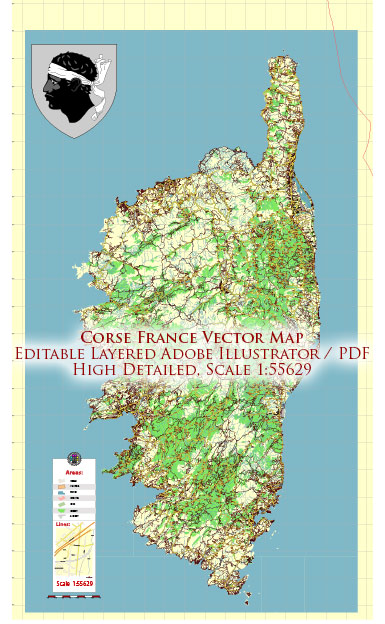Corsica, a French island located in the Mediterranean Sea, has a rich history of urban development that reflects its strategic location and the influence of various civilizations. The island’s urban history is marked by a blend of indigenous, Italian, and French influences.
- Pre-Roman Period: Corsica’s early history is marked by the presence of indigenous populations, including the Corsi and Ligurians. These communities established hillforts and settlements, some of which can still be observed in archaeological remains.
- Roman Influence: Corsica came under Roman control around 238 BCE. The Romans established towns and infrastructure, and traces of Roman roads and buildings can still be seen in some areas. Mariana, near the modern town of Lucciana, was an important Roman settlement.
- Medieval Period: During the medieval period, Corsica experienced a series of invasions and rule by various powers, including the Vandals, Byzantines, and Saracens. Coastal towns faced constant threats from raids, leading to the construction of fortifications such as the Citadel of Calvi and the Citadel of Bonifacio.
- Italian Influence: In the 13th century, Genoa gained control over Corsica, and the island experienced significant Italian influence. Genoa developed and fortified several coastal towns, including Bastia and Ajaccio. The Genoese influence is still evident in the architecture of many Corsican towns.
- French Rule: The 18th century saw a shift in power when Corsica came under French rule. Under the leadership of Pasquale Paoli, a Corsican nationalist, the island briefly gained independence in the mid-18th century. However, French rule was reestablished in 1769. During the French period, urban development continued, and French-style squares and boulevards were introduced.
- Napoleon Bonaparte: Corsica is famously associated with Napoleon Bonaparte, who was born in Ajaccio in 1769. His birthplace, Maison Bonaparte, is now a museum. Napoleon’s influence can also be seen in the urban planning of Ajaccio, where his family home and other monuments pay homage to the French emperor.
- Modern Era: In the modern era, Corsica has seen further urbanization and development. The island has become a popular tourist destination, leading to the expansion and modernization of coastal towns. Ajaccio and Bastia, the largest cities, continue to be important economic and cultural centers.
Throughout its history, Corsica’s urban development has been shaped by a mix of indigenous, Italian, and French influences. The island’s strategic location in the Mediterranean has made it a crossroads of cultures, leaving a diverse and rich architectural heritage. Today, Corsica’s towns and cities reflect this historical tapestry, attracting visitors with their unique blend of influences and picturesque landscapes.


 Author: Kirill Shrayber, Ph.D.
Author: Kirill Shrayber, Ph.D.